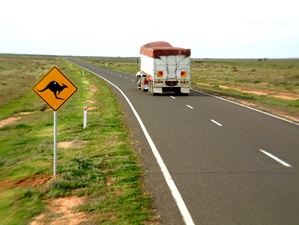The Newman government has developed a clear sense of direction to guide the growing freight industry is Queensland by increasing rail use and creating a more efficient road network.
Released on December 12, the Moving Freight 10-year strategy has identified 38 actions to enhance freight movement in Queensland, including delivering improved heavy vehicle access, increasing infrastructure developments and reducing the red tape for freight permits.
The strategy will provide ample opportunities for employment and apprenticeships in Queensland, through future infrastructure developments and civil works road and rail projects.
Queensland’s freight industry is increasing rapidly and is forecast to grow by an additional 89 per cent by 2026 – reaching 1,643-1,741 million tonnes moved, up from 871 million tonnes in 2010-11.
“That will be the annual equivalent of 21.7 million more truck trips on our roads or 174,000 more freight train trips on our network,” Transport and Main Roads Minister Scott Emerson said.
Improving the freight sector in Queensland may provide benefits for all industries in the state through increased productivity and ease of export and movement.
The coal mining industry is forecast to benefit the most from improved freight movement through Queensland as coal currently accounts for 84.2 per cent of the state’s international exports.
Agricultural commodities are a further important freight-reliant sector. While the exports from this industry only comprise 3 per cent of the total volumes, they are valued at more than $8 billion – second only to coal.
“Queensland’s freight network is critical to our economy and plays a valuable part in each of the four pillars of tourism, agriculture, resources and construction, that we promised to grow,” Mr Emerson said.
Expanding the use of rail freight is the number one priority of the moving freight strategy, while increasing road network access is priority two and facilitating greater freight infrastructure investment is priority three.
“Actions identified to get more freight on to rail and reduce road congestion include preserving train paths on regional rail lines for agricultural freight and undertaking a pre-feasibility study for a new rail freight terminal on the north side of Brisbane,” Mr Emerson said.
This is good news for those considering construction or other infrastructure development apprenticeships in Brisbane, as the future projects should encourage increased employment opportunities in this sector.
By Leanne Detoerkenczy

